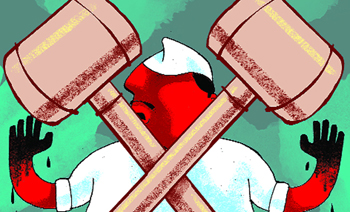 New Delhi, Sep 25: The Union Cabinet on Tuesday decided to promulgate an ordinance to negate a Supreme Court order which sought to disqualify an MP or an MLA/MLC convicted for crimes with jail term of two years or more.
New Delhi, Sep 25: The Union Cabinet on Tuesday decided to promulgate an ordinance to negate a Supreme Court order which sought to disqualify an MP or an MLA/MLC convicted for crimes with jail term of two years or more.
An immediate beneficiary of this ordinance could be Congress MP Rasheed Masood who was convicted by a CBI court in a corruption case. The court is set to pronounce the quantum of punishment next month.
The Supreme Court is scheduled to hear a fodder scam case involving Rashtriya Janata Dal chief Lalu Prasad on September 30. He also faces the prospect of disqualification as Parliament could not pass the Representation of the People (Second Amendment and Validation) Bill during the Monsoon Session.
At an all-party meeting, political parties had agreed to pass the bill, but differences cropped up when it was introduced in the Rajya Sabha. Some political parties were skeptical on rushing through the legislation fearing a public backlash.
The Supreme Court said on July 10 that lawmakers convicted of crimes with jail term of two years or more face immediate disqualification.
The ordinance seeks to negate the apex court judgment from the day it was pronounced if the lawmaker concerned appeals against his conviction within 90 days and gets a stay from a higher court.
However, the lawmaker will not be eligible to vote in Parliament or legislature of a state or draw salary and allowances till his conviction is set aside by the court.
He may continue to take part in the proceedings of the House. The government had also filed a review petition in the Supreme Court in connection with the July 10 judgment after consultations with the attorney general. But it was strongly felt that a bill be brought in Parliament to negate the apex court ruling without waiting for the outcome of the review petition given parties demand.
Congress spokesman P C Chacko defended the decision to promulgate an ordinance and rejected suggestions that the government was resorting to “backdoor methods” to shield convicted MPs.
“Ordinance is not an undemocratic act by the government. It is not a backdoor method. It has to have the nod of Parliament. It will be placed before Parliament in the very next session,” he said.
BJP spokesperson Nirmala Sitharaman slammed the government for deciding to promulgate the ordinance to protect convicted MPs and MLAs.






Comments
Add new comment